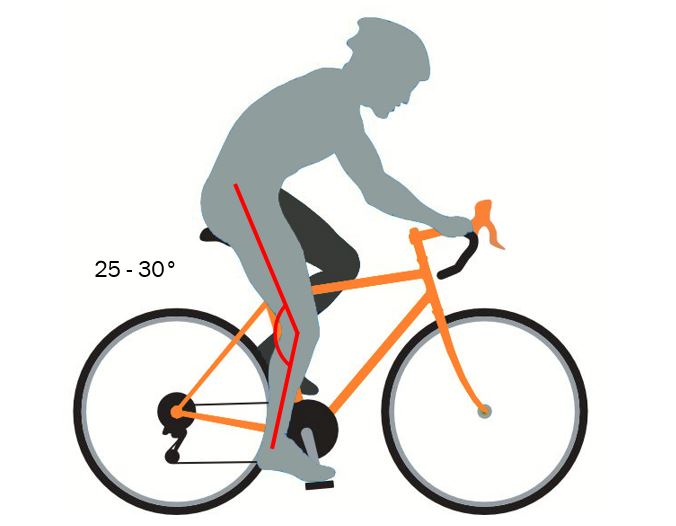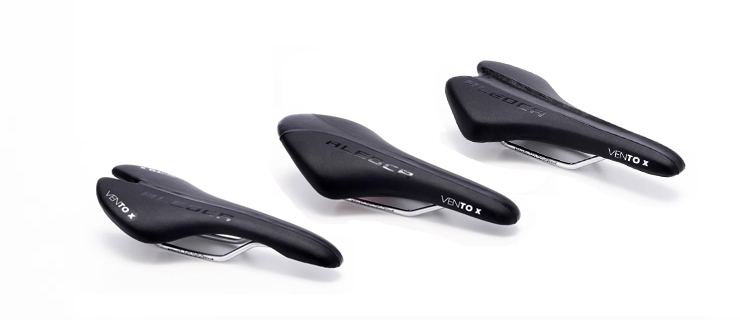 Aside from your frame and your handlebars, the set-up of your saddle is the key for comfort and staying injury free. The height and angle of your saddle will greatly affect your cycling performance and enjoyment. Regardless of what type of bike you ride, the saddle height and angle need to be correctly setup to your riding style.
Aside from your frame and your handlebars, the set-up of your saddle is the key for comfort and staying injury free. The height and angle of your saddle will greatly affect your cycling performance and enjoyment. Regardless of what type of bike you ride, the saddle height and angle need to be correctly setup to your riding style.
The following tips will teach you how to adjust your saddle height, angle and also the fore and aft. For serious riders who aim to have optimum performance, we would suggest a proper bike fit and also more detailed fine-tuning. The following guides are more generic for all different types of riders.
Saddle Angle
The saddle angle (also called tilt) can affect how much pressure is asserted on your knees, groin and lower back.
The saddle should be level to the ground. This will prevent you from sliding forward or backward during riding. A saddle that is pointed downwards will place more stress on the knees whereas a saddle tilted upwards may cause discomfort on the groin and also lower back pain.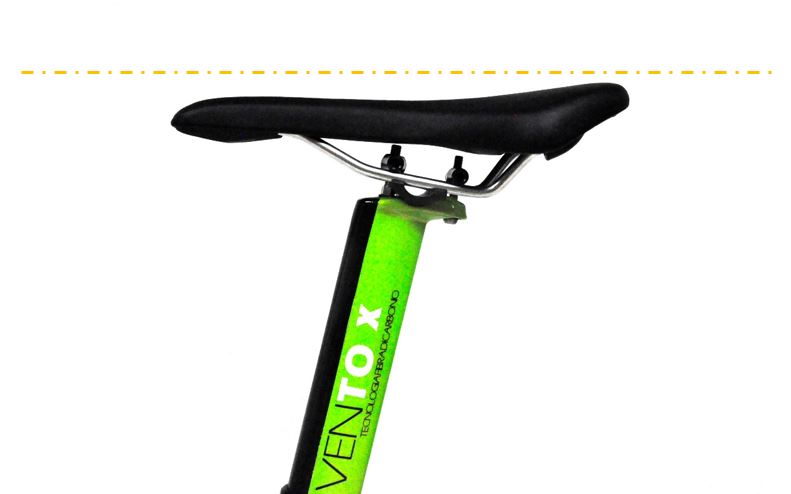 To determine if a saddle is level, make sure that your bike is placed on a level floor. Place a flat object (hard book or board) over the saddle and place a level measure on it. Alternatively, if the saddle design is relatively flat, you may put the level measure directly on the saddle.
To determine if a saddle is level, make sure that your bike is placed on a level floor. Place a flat object (hard book or board) over the saddle and place a level measure on it. Alternatively, if the saddle design is relatively flat, you may put the level measure directly on the saddle.
To make adjustments to the saddle level, use an Allen key to loosen the saddle clamp bolt that is usually found below the saddle.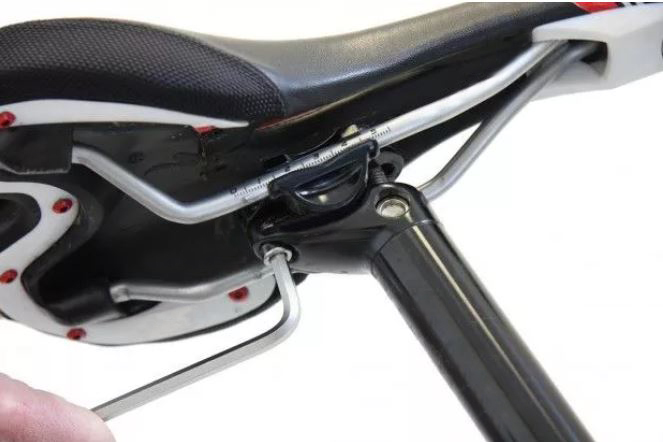 Always make small and precise adjustments when adjusting the saddle level, as a few degrees can cause a very drastic change in riding style.
Always make small and precise adjustments when adjusting the saddle level, as a few degrees can cause a very drastic change in riding style.
If a perfectly level saddle feels uncomfortable to you, fine tune it to suit your riding style. Small degrees of upward or downward angles are acceptable.
Saddle Height
The saddle height of your bicycle will affect your pedal efficiency and power. As a guide for all general riders (leisure to sporty), here is a simple method that you can use to set the correct saddle height.
Most mountain and hybrid bicycles may use quick release seat clamps. These clamps make it easier to make adjustments to your saddle as you do not require extra tools.
 For other models, the seat-clamp may require an Allen key or screwdriver to loosen.
For other models, the seat-clamp may require an Allen key or screwdriver to loosen.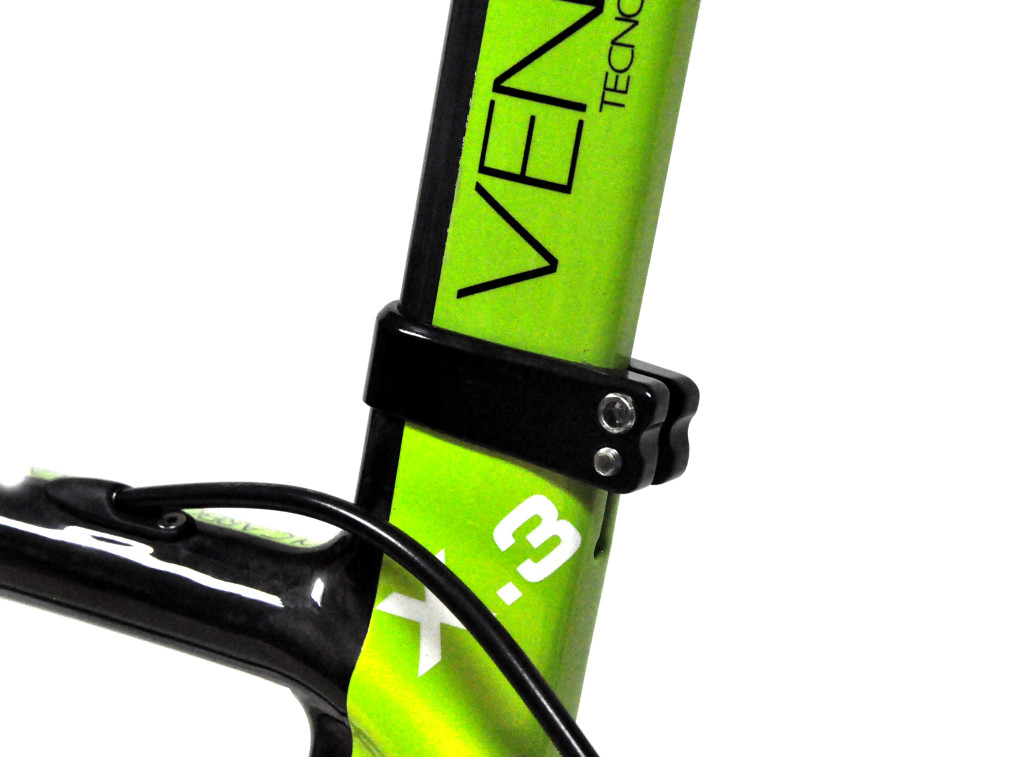
To determine the right saddle height, you may require a mirror or a friend to help observe your leg position while you mount your bike. You could also use your phone to capture your position after making adjustments.
The saddle height should be adjusted to the point that your leg is almost straightened during the downward pedal stroke. Alternatively, a recommended 25°-30° angle will suffice for beginners.
Saddle Fore and Aft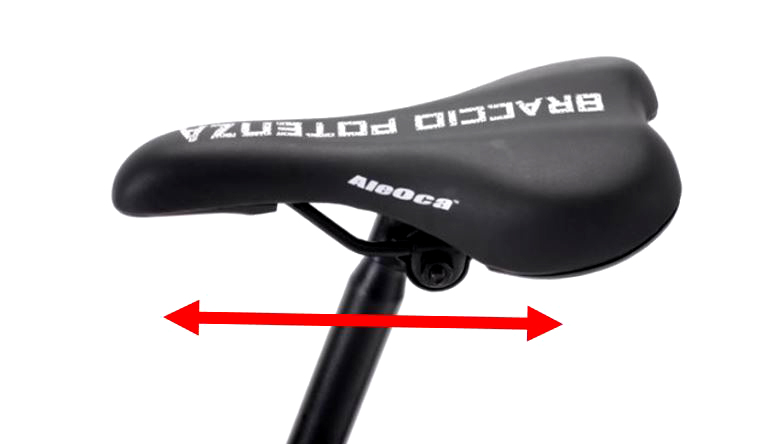 The fore and aft position of your saddle affects how close you are seated towards the handlebars. This affects your balance and also the degree that your leg bends during the pedal-stroke.
The fore and aft position of your saddle affects how close you are seated towards the handlebars. This affects your balance and also the degree that your leg bends during the pedal-stroke.
One common method used to determine saddle fore and aft position is the knee over pedal axle position.
Similarly, you will require an extra friend or helper to help observe and measure your leg position.
Step 1: First, sit on the bike with the crank arms parallel to the ground, (3 o’clock and 9 o’clock position.) Your bike can be set on a stationary trainer or you could have somebody holding it upright for you.
Step 2: Using a string tied with a weight at the bottom, place the string at the front of your forward kneecap and see where the weighted string hits in relation to the pedal axle. The weighted string should intersect the pedal axle when hanging from your knee.
If it falls in front, adjust the saddle backwards. If it falls behind, adjust the saddle forward. Always make adjustments in small increments.
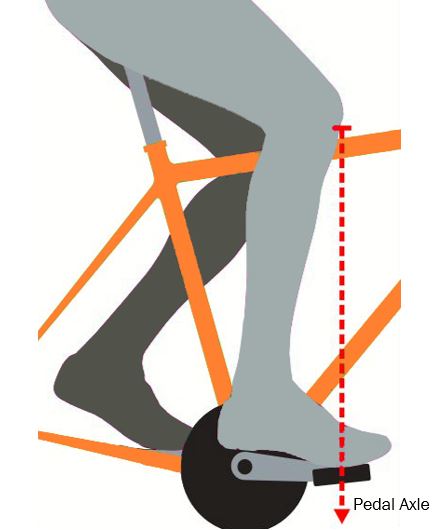 Although the knee over pedal axle method is straightforward and easy to do, it does not take into account your individual body type, flexibility or pedaling style. Hence, if you ever feel any discomfort after making changes, you may want to consult a proper bike fitter or expert for advice.
Although the knee over pedal axle method is straightforward and easy to do, it does not take into account your individual body type, flexibility or pedaling style. Hence, if you ever feel any discomfort after making changes, you may want to consult a proper bike fitter or expert for advice.

